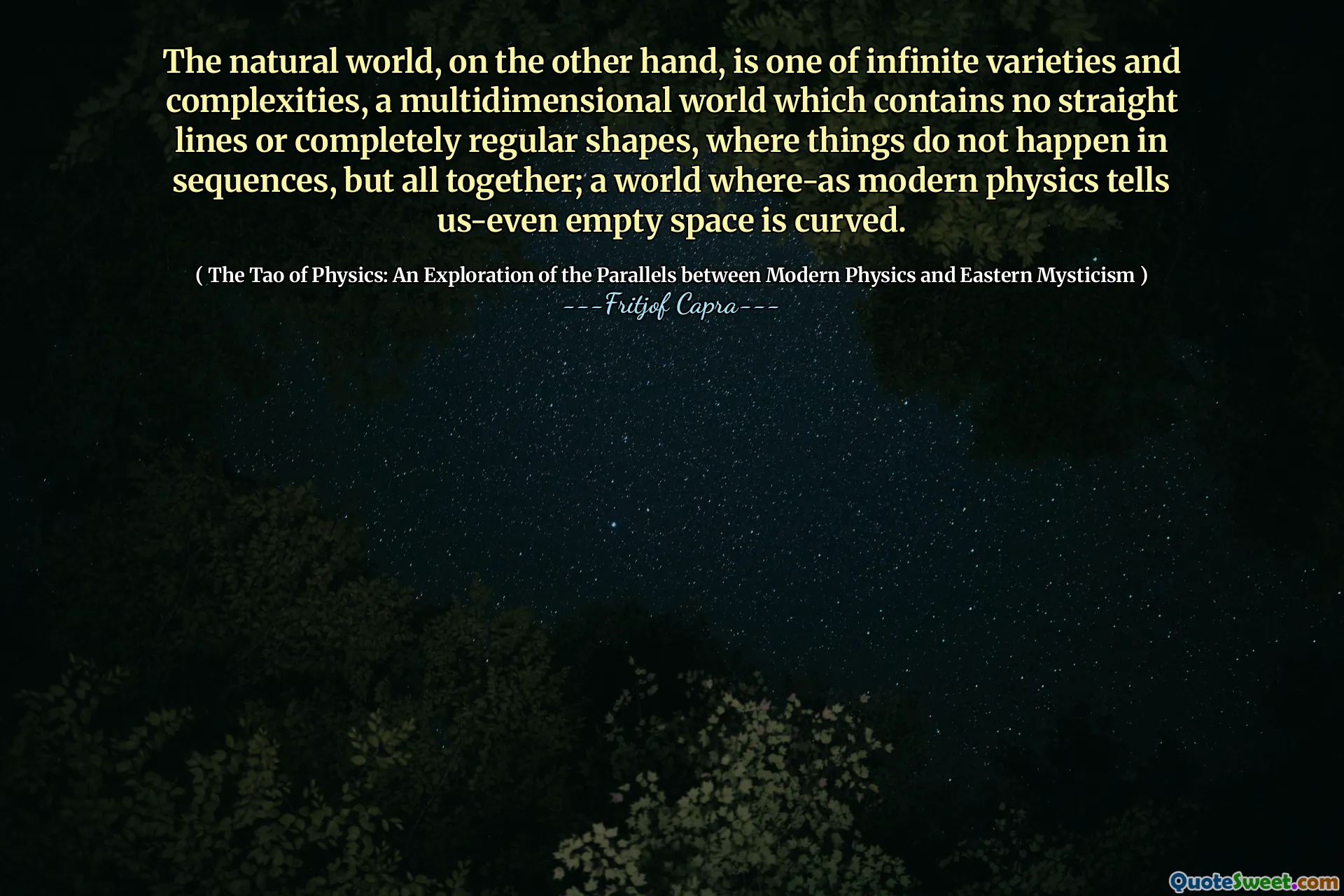
The natural world, on the other hand, is one of infinite varieties and complexities, a multidimensional world which contains no straight lines or completely regular shapes, where things do not happen in sequences, but all together; a world where-as modern physics tells us-even empty space is curved.
In Fritjof Capra's "The Tao of Physics," he emphasizes the intricate and diverse nature of the natural world, contrasting it with simplified human constructs. He points out that the natural environment is characterized by an endless array of forms and interactions, devoid of straight lines or uniform shapes, reflecting its complexity and dynamism.
Capra further illustrates that, unlike the linear and ordered framework often found in human thinking, events in nature occur simultaneously. He draws on insights from modern physics to explain that even empty space has curvature, underscoring the interconnectedness and multidimensionality of reality, which aligns with concepts found in Eastern mysticism.






